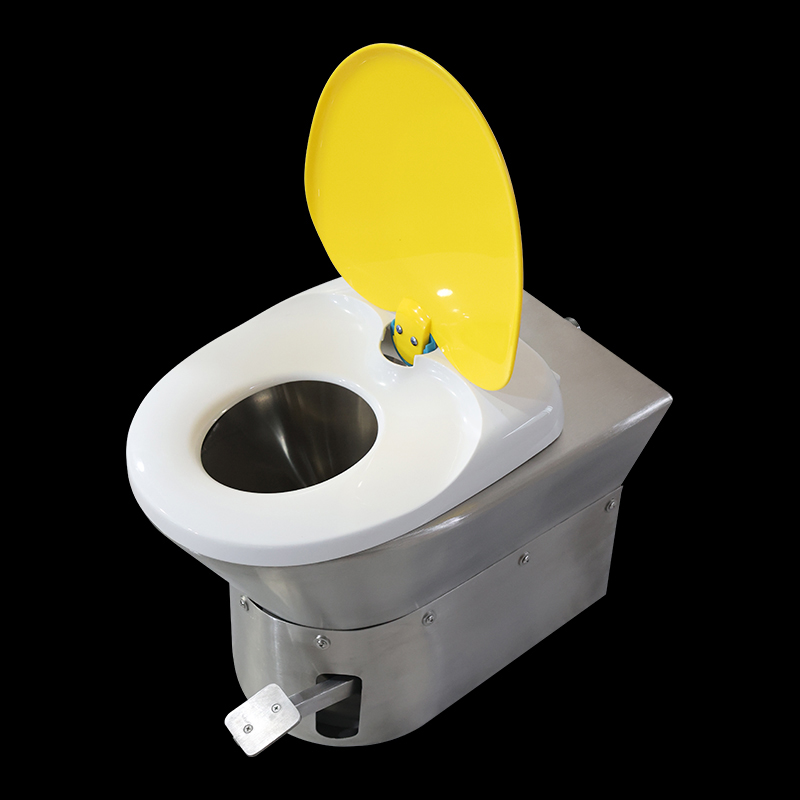Stainless steel toilets are popular in a variety of settings due to their durability, hygiene and stylish appearance. In particular, they have become the first choice for train facilities, offering numerous benefits to passengers and operators. As the demand for efficient and reliable train toilets continues to grow, stainless steel toilets have become the ideal solution. This article will explore the advantages of stainless steel train toilets, focusing on their features, manufacturing processes and overall impact on the passenger experience.
Stainless steel toilets are manufactured in specialist factories that produce high quality, durable fixtures suitable for demanding environments such as trains. These factories utilize advanced technology and precision engineering to manufacture stainless steel toilets that meet the stringent requirements of the railway industry. The production process uses high-grade stainless steel, which is corrosion-resistant, easy to maintain, and has long-lasting performance. This ensures the toilets can withstand the rigors of continued use and provide reliable service throughout the life of the train.
One of the main advantages of stainless steel train toilets is their exceptional durability. Unlike traditional ceramic or plastic fixtures, stainless steel toilets are highly resistant to impact, vandalism, and wear and tear. This makes them ideal for the demanding conditions of train toilets, where they must withstand frequent use and potentially rough handling. In addition, stainless steel toilets are easy to clean and maintain, helping to extend their service life and improve overall cost-effectiveness for train operators.
When it comes to hygiene, stainless steel toilets have significant advantages over other materials. The non-porous surface of stainless steel prevents bacterial growth and is easy to disinfect, ensuring a high level of cleanliness in train restrooms. This is particularly important to maintain a safe and healthy environment for passengers and meet the strict hygiene standards required of public transport facilities. Using stainless steel toilets helps minimize the risk of contamination and provides train passengers with a more enjoyable and hygienic travel experience.
In addition, the stylish and modern appearance of the stainless steel toilet adds a touch of sophistication to the train bathroom. Its smooth reflective surface creates a contemporary aesthetic that complements the overall design of modern train interiors. This not only enhances the visual appeal of the facility but also conveys a sense of quality and attention to detail, which is important in making a positive impression on passengers. The use of stainless steel toilets can enhance the overall atmosphere of train restrooms and bring passengers a more comfortable and enjoyable travel experience.
From a practical perspective, stainless steel toilets are designed to meet the specific requirements of train facilities. Its compact and space-saving design makes it suitable for the limited areas of train toilets, allowing for optimal utilization of the available space. In addition, stainless steel toilets can be customized to incorporate features such as water-saving mechanisms, anti-vandal components, and ergonomic designs to enhance functionality and user convenience. These tailor-made solutions ensure that stainless steel toilets are ideally suited to the unique challenges of train toilets, providing passengers and operators with a reliable, efficient hygiene solution.
In short, stainless steel toilets have become the first choice for train facilities, combining durability, hygiene and aesthetics. The expert manufacturing process of the Stainless Steel Toilet Factory ensures that these fixtures are designed to meet the stringent requirements of train toilets, providing long-lasting performance and ease of maintenance. As the rail industry continues to prioritize enhanced passenger experience and operational efficiency, stainless steel toilets have proven to be the ideal solution to achieve these goals. By incorporating stainless steel toilets into train facilities, operators can ensure high standards of hygiene, durability and visual appeal, ultimately resulting in a more positive and enjoyable travel experience for passengers.

